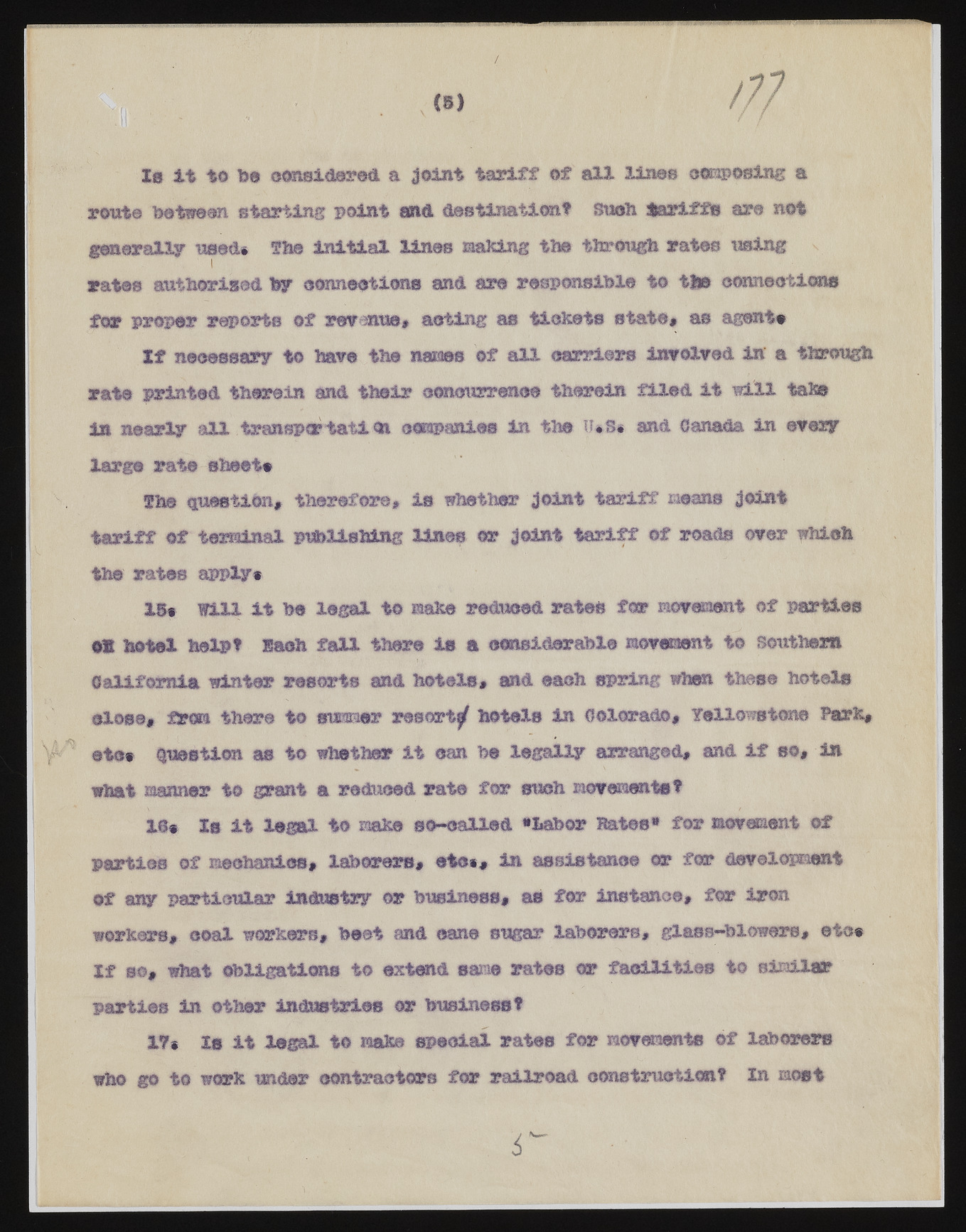Copyright & Fair-use Agreement
UNLV Special Collections provides copies of materials to facilitate private study, scholarship, or research. Material not in the public domain may be used according to fair use of copyrighted materials as defined by copyright law. Please cite us.
Please note that UNLV may not own the copyright to these materials and cannot provide permission to publish or distribute materials when UNLV is not the copyright holder. The user is solely responsible for determining the copyright status of materials and obtaining permission to use material from the copyright holder and for determining whether any permissions relating to any other rights are necessary for the intended use, and for obtaining all required permissions beyond that allowed by fair use.
Read more about our reproduction and use policy.
I agree.Information
Digital ID
Permalink
Details
Member of
More Info
Rights
Digital Provenance
Publisher
Transcription
/ (8) Is it to ft© considered a joint tariff of all lines composing a route between starting point and destination? Such tariffs are not generally used# The initial lines making the through rates using rates authorised fty connections and are responsible to t!» connections to r proper reports of rev-sms, anting as tickets state, as agent# If necessary to hare the names of all carriers involved in a through rate printed therein and their concurrence therein filed it will take in nearly all transpcr tafl <n ommanies in the u»S« and Canada in every large rate sheet# The question, therefore, is whether joint tariff means joint tariff of terminal publishing lines or joint tariff of roads over which the rates apply# 18* mil it fte legal to make reduced rates for movement of parties 01 hotel help? Each fall there is a considerable movement to southern California winter resorts said hotels, and each spring when these hotels close, from there to summer resort^ hotels in Colorado, Yellowstone Park, etc* Question as to whether it can be legally arranged, and if so, in what manner to grant a reduced rate for such movements? 18* Is it legal to make so-called “Labor Rates* for movement of parties of mechanics, laborers, etc*, in assistance cap for development of any particular industry or business, as for instance, for iron workers, coal workers, beet and cane sugar laborers, glass-blowers, etc# If so, what Obligations to extend same rates or facilities to similar parties in other industries or business? 17* Is it legal to make special rates for movements of laborers who go to work under contractors for railroad construction? In most 6

